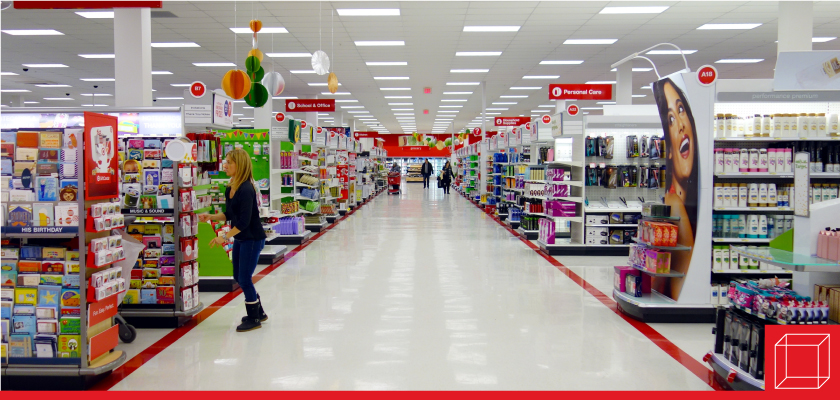Retailers Struggle to Balance Inventory | June 2022
Years after the onset of the COVID-19 pandemic, retailers, and manufacturers are still struggling to balance their inventories.

Years after the onset of the COVID-19 pandemic, retailers, and manufacturers are still struggling to balance their inventories. After many months of empty shelves and stockouts, major retailers have focused on restocking. While this may seem like positive news, inventory growth has outpaced sales gains due to inflationary pressures, among other factors. Too much inventory can hurt sales, and thus hurt profits.
Optimizing inventory
Although inventory on hand is controlled by both production needs and marketing considerations, the purchase of inventory needs to be coordinated by the financial manager in order to manage cash flows. The object is to minimize the firm’s investment in inventory without experiencing critical materials shortfalls or lost sales due to stockouts.
How inventory affects profits
Every dollar spent building inventory is a dollar not available for investment in some other area of the organization. This means that excess inventory ties up a company’s cash. Additionally, excess inventory can lower a company’s ability to increase prices, damaging its pricing power. Companies that don’t increase prices in the face of rising costs may face profit margins missing estimates. Generally, when retailers have too much inventory, discounts abound.
On the other hand, shortages are harmful, too. Not having the right product at the right place at the right time may send the customer to a competitor for good.
How did we get here?
COVID-19 upended the global economy and supply chain. Panic buying and stockpiling in the early months of the pandemic left retailers with empty shelves, but the problem was much more far-reaching. While demand for products such as meat and toilet paper skyrocketed, demand for other products, such as luggage and apparel, plummeted. The lockdowns and shrinking demand stunted the entire supply chain.
Suppliers tried to produce goods faster for in-demand product categories, but lockdowns and necessary health and safety measures made this challenging. Additionally, food producers had a hard time redirecting food intended for commercial use, leading to dumped milk, rotting produce, and smashed eggs.
When the lockdowns ended, demand surged faster than expected, catching many companies by surprise. The struggle then became increasing inventory to the proper level, which is especially challenging in uncertain economic times. Clogged seaports and a truck driver shortage tightened supply even further.
Where are we now?
U.S. companies are holding more inventory than they were before the pandemic, and they have achieved this rather quickly. This could spell trouble for companies if demand isn’t strong enough. According to Barron's, inventory growth has outpaced sales growth. Dick’s Sporting Goods, for example, has suffered from having too much inventory on hand, hurting its profits. The company, whose inventory increased by 40 percent, had to lower this year’s outlook for sales growth and earnings.
Similarly, Target’s inventory grew by 43 percent while sales only grew by 4 percent. Costs have risen (e.g., labor costs), but Target has diluted its pricing power, so it isn’t able to adequately increase prices to offset these costs. The company also said it invested in the wrong product categories, making the situation worse. It spent too much on furniture, televisions, and kitchen appliances, while consumers are more interested in luggage, toys, and home décor.
Initially, retailers anticipated demand would be high this summer. A huge spike in inflation, however, changed everything. This created the unfavorable retail inventory/sales ratios situation many have found themselves in.
What’s next?
Supply chain management refers to connecting and integrating all parties or members of the distribution system in order to satisfy customers. The supply chain can’t be turned on or off with the push of a button. It is an often lengthy and complex process that involves forecasting and coordinating with multiple parties. This means the inventory problem many retailers face is something that cannot be addressed with a quick fix.
It's likely that these retailers will turn to sales promotions to clear out inventory. Target, Walmart, Best Buy, Urban Outfitters, and Dick’s Sporting Goods are just a few of the major retailers that have reported sitting on a pile of excess inventory. While this may delight consumers who have no doubt felt the effects of inflation, this puts retailers in a tricky spot.
In the Classroom
This article can be used to discuss supply chain management (Chapter 8: Managing Operations and Supply Chains) and managing current assets (Chapter 16: Financial Management and Securities Markets).
Discussion Questions
Why is it important to optimize inventory?
Describe how the pandemic affected the global supply chain.
Why is demand lower this summer than anticipated?
This article was developed with the support of Kelsey Reddick for and under the direction of Geoffrey Hirt, O.C. Ferrell, and Linda Ferrell.
Sources
Jacob Sonenshine, "Companies Are Finally Rebuilding Their Inventories. What That Means for Profits," Barron's, May 29, 2022, https://www.barrons.com/articles/companies-are-finally-rebuilding-their-inventories-what-that-means-for-profits-51653676673
Nathaniel Meyersohn, "Stores Have Too Much Stuff. Get Ready for Discounts," CNN, June 1, 2022, https://www.cnn.com/2022/05/27/business/stores-clothing-television-furniture-discounts/index.html
Tom Ryan, "Why Are Retailers Struggling So Hard to Balance Inventory?" RetailWire, May 31, 2022, https://retailwire.com/discussion/why-are-retailers-struggling-so-hard-to-balance-inventory/



